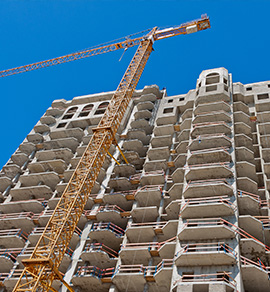Concrete finds host of new applications
Concrete has been around a long time. In Rome’s spectacular Colosseum, ancient Greek temples and fully waterproofed aqueducts now 2,600 years old, concrete was the building material of choice.
Today, we still rely heavily on concrete for everything from massive infrastructure projects, such as highways and bridges, to traditional parking garages and home basements. But now concrete is finding its footing in a variety of new and creative uses.
One of the most popular and fastest-growing applications for concrete is flooring. Architects and builders of retail stores, restaurants, offices and even some homes are drawn to concrete’s surprising flexibility. It can be acid-stained, painted, inlaid, stamped and treated in other ways to create unique and striking floors. Even the more complicated designs and treatments can cost the same or slightly less than marble, granite or slate. And concrete offers a longer, and virtually maintenance-free, life than other flooring options. It’s also very energy-efficient and ideal for use with floor-laid radiant heating systems.
Concrete has also become a popular option for counters, whether in a home or restaurant kitchen or in other retail and commercial outlets. Like the flooring, concrete counters can be customized with paints, stains, patterns and inlays to produce a distinctive look at a reasonable cost—and they last long and wear well.
With the introduction of overlays, concrete has also shown its adaptability to decorative vertical surfaces. High-quality overlays, such as Arclin’s 2252 and 2253 High Density Overlay (HDO) can produce a sleek, architectural finish on concrete that is as attractive as it is strong. Builders and architects are using concrete overlays to create beautiful contemporary surfaces inside and out.


 Driving much of the construction industry recovery is a particularly strong U.S. market for mixed-use communities and high-rise residential buildings, according to the
Driving much of the construction industry recovery is a particularly strong U.S. market for mixed-use communities and high-rise residential buildings, according to the 


